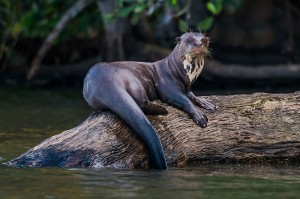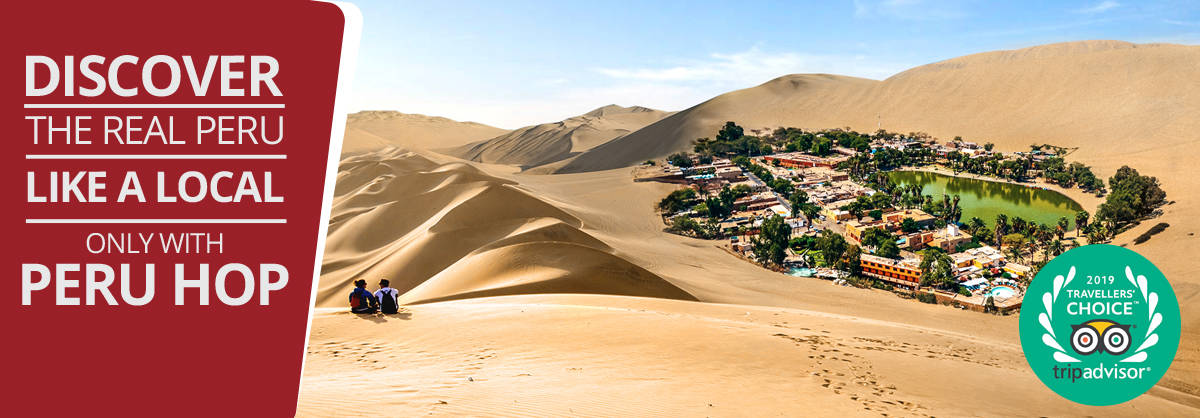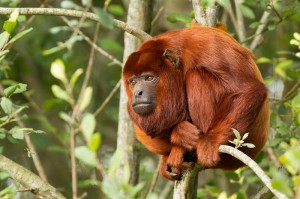Which is better Manú or Tambopata Jungle
December 13, 2012The two principle Jungle regions that tourists visit in Peru are either Manú or Tambopata. Both are located in the south-east of the country, and both are considered to be the most bio-diverse places on the planet. So which one should you include in your Peru vacation? Paul Jones, a Peru travel adviser takes a closer look at trying to answer the question – Which is better Manú or Tambopata Jungle?
Just last week I met with Barry Walker, a leading expert in birding in South America. Barry, a fellow Brit and long-time resident of Cusco, knows a thing or two about Peru’s Jungle, and over the years has led many tours to both Manú and Tambopata. Although we planned to meet to discuss Peru’s 2012 Birding Rally Challenge, during the conversation we stumbled upon the question – which is better Manú or Tambopata Jungle? Barry’s response was quite straight forward. “Tambopata Jungle is easy to get to, it’s cheaper, it’s well developed for tourism, but it is much harder to see wildlife. Manú is kind of the reverse, it’s harder to get to, it’s is much more expensive, there are less jungle lodges, but wildlife spotting opportunities are better.”
In a nut shell Barry’s summation of the two regions was right on the mark. I know from my own experience of putting together Peru vacation packages, that Tambopata is by far the most popular area and an easier integrate in a tour, whilst on the other hand Manú is much less travelled, and a much tougher region to promote.
Personally, when someone asks my opinion on which is better, I would always say each has its own merits, but let’s look in detail at each of the points that Barry raised, so you can make an informed decision about which is better, Manú or Tambopata Jungle.
How to get there
Tambopata National Park
By far the easiest jungle region to get to. LAN, TACA and Star Peru all offer several daily flights from both Lima and Cusco to Puerto Maldonado (Tambopata’s main town). Most lodges are located on the banks of the Tambopata River, and are accessible within 2 hours from the airport. Some lodges sit on the fringe just outside of the national park, whilst other are located 30 minutes inside the boundary.
Manú National Park
Quite difficult to get to as there are and there are no commercial flights to the region. Light aircraft flights from the small airstrip at Boca Manú are infrequent and unreliable. From Cusco to the edge of the park, you travel by land through the remote village of Paucartambo, before descending 1900 meters (6,230 feet) into the Amazon Basin. This journey takes approximately 6 – 8 hours, but a further day of travel by land and river is required to access the more remote parts of the park.
ENTERTAINMENT TIP: If looking for fun at night, or to watch sports during the day, or even a taste of home, visit the Wild Rover Hostels Chain for great food, sports and beer! Entrance to their bars is free even for non-guests
How much does each one cost
Manú is by far the more expensive region to visit, often 2 or 3 times more expensive than a trip to Tambopata. There are three main reasons for this, the length of the trip, group sizes and the cost of operating lodges and tours. For trips to Tambopata you need to budget US$ 100 per day, plus flights approximately US$ 300. For trips to Manú you will need to budget US$ 200 – 300 per day.
The length of the trip
Due to the time it takes to access Manú National Park, trips to this region are generally a minimum of 5 days, but extended trips of 15 days or more are not uncommon. Tambopata on the other hand is more commercialized, and within easy access by air. Trips to this part of the jungle are usually 3 to 4 days at the most.
Group Sizes
Trips to Manú National Park are generally more specialised, therefore attracting smaller groups of visitors like birdwatchers and natural history enthusiasts etc. Tambopata National Park attracts a larger more eclectic group of visitors that are looking for that all-round jungle experience. Smaller groups will need to share the cost of transportation, guides and porters between a lesser number of people, making trips more costly.
Cost of Lodges
Access to Tambopata Jungle is much easier, and with several daily flights to the region the cost of operating lodges is lower. Manú on the other hand is far more remote, and everything needed to service the lodges is delivered overland and often by boat. This of-course makes the lodges in the area slightly more expensive to operate.
How much wildlife you can expect to see
There are never any guarantees that a trip to the jungle will result in sightings of abundant wildlife. This applies to both Manú, Tambopata and any other jungle region in the world. Naturally most wildlife will scatter at the slightest sound, smell or sight of human presence. Therefore wildlife spotting can often take a lot of patience and time. Your best chance of seeing a variety of wildlife is as part of a group led tour, with a professional guide. Excursions to oxbow lakes, macaw clay licks, night time hikes, canopy towers and nocturnal river rides offer the best chance of spotting the most common animals including: monkey´s, red and green macaws, giant otters, black caiman, hoatzin, tamarin and capibara.
Whilst researching this article I found some interesting facts about the percentage of visitors that spotted certain animals, whilst staying at the Posada Amazonas Lodge in Tambopata. It is quite an eye opener and goes something like this. Red Howler Monkey 61%, Saddleback Tamarin 46%, Red and Green Macaw 77%, Giant Otter 51%, Spider Monkey 2%, Jaguar 1%, Puma 0.5%, Toucan 0.2% and Armadillo 2%. Only 1 in 200 people saw a puma, and only 1 in 500 people spotted a tucan!
So for wildlife spotting which is better, Manú or Tambopata Jungle? Experts generally agree that due to its remoteness, slightly increased bio-diversity and microclimates, Manú is probably the better region to visit. However, both regions have their pros and cons, and both regions are some of the best in the world.

What wildlife can you expect to see
This applies to both Manú and Tambopata regions.
High chance
Red Howler Monkey, Capibara, Aguti, Saddleback Tamarin, Dusky Titi Monkey, Red and Green Macaw, Giant Otter, Black Caiman & Brown Capuchin Monkey.
Meduim chance
Scarlet Macaw, Tree Frogs, White Caiman, Blue and Yellow Macaw, Night Monkey & Squirrel Monkey.
Low chance
Toucan, Coatí, Puma, Jaguar, White Capuchin Monkey, Anteater, Armadillo, Harpy Eagle, White Lipped Pecary, Red Bellied Macaw, Red Brocket Deer, Collared Peccary & Spider Monkey.
List of Manú Lodges
Wayquecha Biological Station
Located in the higher cloud forest of Manu and operated by the NGO Amazonian Conservation Association. Offers 6 twin rooms, and has 12 KM’s of trails.
Cock of the Rock Lodge
Situated on the edge of Manu, 6 hours from Cusco in mosquito-free cloud forest. 8 double bungalows arranged in a jungle garden.
Paradise Lodge
Relatively unknown, but has a capacity for 16 people in double and triple rooms. Situated just 5 minutes from the Cock of the Rock Lodge.
Manu Cloud Forest Lodge
A 16 bed lodge that can be reached in 6-7 hours from Cusco. Located next to a narrow 400 foot waterfall, lodge facilities include a sauna, private bathrooms and hot water.
Amazonia Lodge
A converted tea hacienda with balconies that look out over lush tropical gardens. Over 600 hundred species of bird have been recorded at the lodge.
Pantiacolla Lodge
A well-known lodge located at the foot hills of the Pantiacolla mountains, overlooking the turbulent Alto Madre de Dios River. The lodge features many trails, platforms and hides.
Manu Learning Centre
Designed as a facility for field researchers, educational groups and volunteers. The lodge is located on the banks of the Madre de Dios River, and offers an excellent location for spotting endemic bird species.
Manu Wildlife Centre
Offers 22 double bungalows, with private toilets and shower facilities. Strategically located in an area of forest with a high diversity of micro-habitats.
List of Tambopata Lodges
Inkaterra Reserva Amazonica
A luxury lodge by Inkaterra, offering high quality individual cabinas, spa facilities, a gourmet restaurant and a private tree top canopy walkway.
Posada Amazonas
An excellent large mid-range lodge, located 2 hours from Puerto Maldonado. Facilities include a large dining area, bar and massage area.
Refugio Amazonas
Operated by Rainforest Expeditions, Refugio lodge is situated inside the boundary of the Tambopata National Park. Caters for general tourism and larger educational groups.
Tambopata Research Centre
A comfortable 18 bedroom lodge, located 7 hours from Puerto Maldonado. Intended for researchers and tourists alike, the lodge’s isolated location offers greater wildlife spotting opportunities.
Hacienda Concepcion
A mid-range affordable lodge by the Peruvian Inkaterra chain. Located just 20 minutes down river from Puerto Maldonado, the lodge is conveniently located for quick access.
Lake Sandoval Lodge
Overlooking an oxbow lake, this 25 room lodge offers guests fully screened accommodations, hot water and private bathrooms.
Eco-Amazonia Lodge
Located 10 Km’s down river from Puerto Maldonado and close to Lake Sandoval, the lodge offers 25 bungalows spread out in Jungle gardens. The lodge features a large dining room, private bathrooms and 24 hour hot water. Considered an economical lodge.
Explorers Inn
Founded in 1975 and located 40 miles from Puerto Maldonado, the lodge features single, double and triple accommodations with a total of 70 beds. Considered a more economical lodge.
Summary
So to answer the question which is better, Manú or Tambopata Jungle? It really depends on what you are looking to achieve from your visit. If you are looking to experience the Amazon Jungle, with a reasonable level of adventure at an affordable price, Tambopata is for you. If you are looking to spend extended time in the jungle, are prepared to pay a little more and like adventure then Manú should be your choice.
This article ‘which is better Manú or Tambopata Jungle’ was brought to you by the Peru travel experts at TheOnlyPeruGuide, the best online resource for Peru travel information.
YOU MAY LIKE

Lima to Machu Picchu – Agencies DON’T want you to read this!

#1 Rated Day Trips From Lima To Unforgettable Destinations

Everything You Need to Know to Avoid the Typical Tourist Mistakes At Machu Picchu

What NOT To Do When Visiting Rainbow Mountain

Spend 50% less and see 100% more in Peru

Machu Picchu Tickets – All You Need To Know!

These Hidden Destinations Just Outside Of Lima Will Blow Your Mind!

Peru – How to Avoid Being a Typical Tourist

OFFICIAL: This Company Was Voted The Best Way To Get Around Peru

Peruvian Travel Secrets That Only The Locals Know




